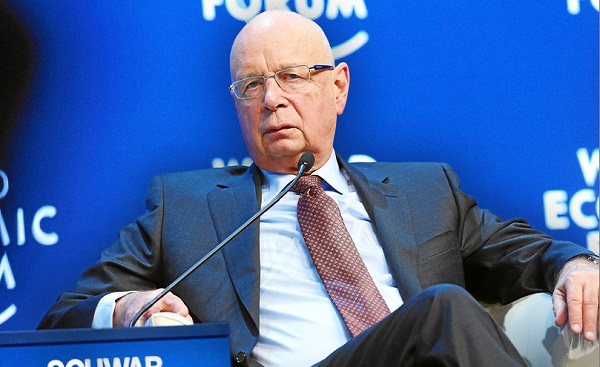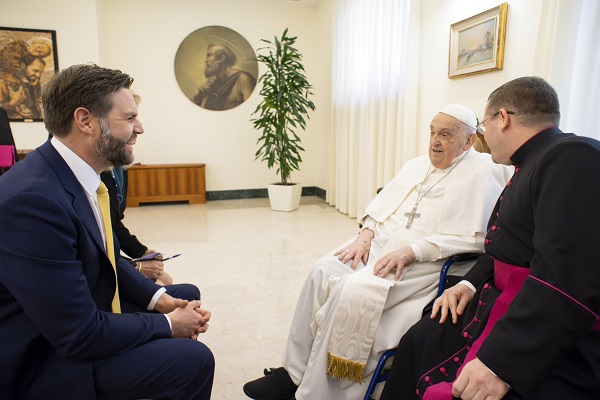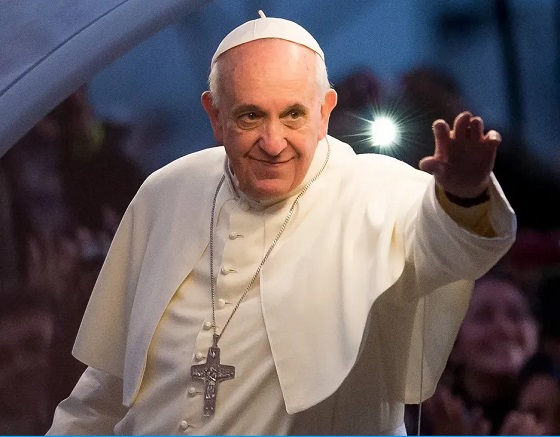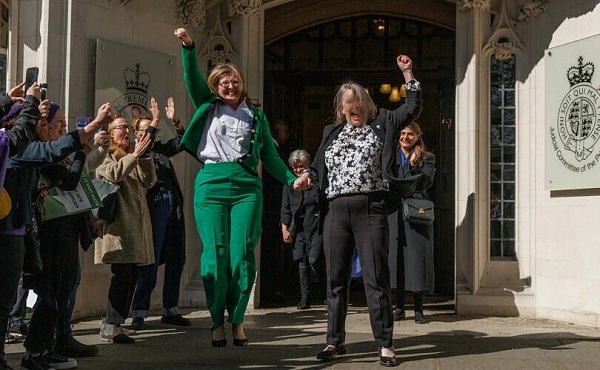Censorship Industrial Complex
Another Mass Grave?

No. One outrageous lie was quickly discounted, yet another lives on, to the detriment of everybody involved.
From the Frontier Centre for Public Policy
The Kamloops claim didn’t come out of the blue. The TRC’s well-publicized “missing children” wild goose chase thoroughly indoctrinated indigenous communities. It convinced foolish people, like Casimir, Leah Gazan and Kimberley Murray, that thousands of “missing children” had been secretly buried all across Canada.
“My brother Rufus saw them take all those children and stand them up next to a big ditch, and then the soldiers shot them all and they all fell into that ditch. Some of the kids were still alive and they just poured the dirt in on top of them. Buried them alive.”
This mass murder happened in 1943 — not in Nazi-held Europe, but in Brantford, Ontario.
So, there you have it — the personal story of a residential school “survivor” describing the day the Canadian Army lined up 43 Indian children in front of a residential school at Brantford, Ontario, shot them and dumped their bodies into a mass grave. The May 27, 2021 announcement that the remains of 215 former students of the Kamloops residential school wasn’t the first time that a claim about sinister residential school deaths and clandestine burials had been made.
This Brantford story is obviously untrue. Any reasonably well-informed person with a lick of sense would know that at a glance.
But that didn’t stop the claim from making the social media rounds for years. According to the fact-check tens of thousands of people have read this bogus claim over the years, and many appear to have believed it completely. In fact, despite the fact checks proving that the claim was entirely false it continues to circulate today.
Both the Kamloops and Brantford claims came basically from the same place — the strange mind of a defrocked United Church Minister, Kevin Annett. It was Annett who created the bogus Brantford claim. In a strange twist, the picture at the top of the page — said to be from Brantford — is actually a photo of the former Kamloops Indian Residential School, as it looked in the 1920s.
And it was Annett who inspired the TRC’s misguided “missing children/unmarked graves” wild goose chase that, in turn, inspired Chief Rosanne Casimir to make the Kamloops claim. Both claims were equally and obviously false: The Kamloops claim was that the “remains of 215 children were found.” In fact, only radar blips (anomalies) were detected- blips that turned out. to most likely be from previous excavations, and not graves. Casimir and Annett both knew that they were making false claims.
Annett’s bogus claims come from his imaginative reworking of stories of “survivors” that he publicized in his blogs, books, interviews and movies.
His most famous movie is Unrepentant. This movie has been viewed by tens of thousands of Canadians, particularly in indigenous communities, such as the Tk’emlups community at Kamloops.
It has won awards, and been praised by eminent people, such as Noam Chomsky. Despite being every bit as false as the claim that the Canadian army shot 43 indigenous children, it actually convinced Member of Parliament, Gary Merasty, that it was accurate history. It is nothing short of amazing that this highly suggestible MP was then able to convince the equally gullible, and newly appointed TRC commissioners that there were many thousands of such “missing children”, as Annett alleged.
The TRC commissioners then launched their “missing children/unmarked graves” campaign despite having no mandate from the federal government to do so. (Independent researcher, Nina Green, describes this in detail here.)
You see, the Kamloops claim didn’t come out of the blue. The TRC’s well-publicized “missing children” wild goose chase thoroughly indoctrinated indigenous communities. It convinced foolish people, like Casimir, Leah Gazan and Kimberley Murray, that thousands of “missing children” had been secretly buried all across Canada.
Indigenous people became hooked on these stories.
Annett’s most famous book is his 393 page opus, “Hidden No Longer.” That book introduced the idea that the deaths of these thousands of “missing children” (his estimates range from 50,000 to 250,000, depending on the telling) constituted genocide. It is absolutely shocking that our MPs actually voted to condemn Canada of genocide based essentially on Kevin Annett’s bogus claims.
Based on those same bogus claims Annett was hired by the Brantford Mohawk community in 2011 to dig up the graves that he claimed existed in the apple orchard area of their residential school. According to Annett, these were the graves of indigenous students who had been secretly killed and buried in the apple orchard at the school, with the forced help of fellow students.
Sound familiar? It should. That was essentially the same grisly tale repeated by Chief Rosanne Casimir years later in Kamloops. (See above.)
Except that the wiser folks within the Brantford Mohawk community twigged on to Annett’s tricks. And when Annett was found on the streets of Toronto, waving around chicken bones, and pretending that they were the bones of children he had unearthed at Brantford, the Mohawk elders came together and publicly denounced Annett as a fraud at a community meeting. They then banished him from their community.
Unfortunately, Casimir became a useful idiot for Annett — just as the gullible TRC commissioners did — and no such leadership has yet come forward from the wiser elements within the Kamloops indigenous community. Those folks are silent, while the more vocal contingent are still sticking to their story that the soil anomalies are the “remains of 215 children,” and not what they almost certainly are — 1924 septic excavations.
So, the questions should be asked: Is the claim that the Canadian army shot 43 indigenous children, and dumped them in a mass grave, any more or less believable than the claim that priests killed and secretly buried 215 children at Kamloops, (or any of the copycat claims that followed it?)
What is it about that Mohawk claim that gives it appeal to only the most gullible among us, while the equally improbable Kamloops claim is still taken seriously by so many people?
On the surface, both claims are outrageous, and have no real evidence to support them. Quite the contrary, every Canadian history book ever written is cogent evidence that both stories are false. But the Mohawk claim was dismissed as the nonsense it obviously was, while the Kamloops claim lives on.
At least part of the answer to those questions appears to be in the response of the government in power, and the media to the claims. If the Brantford claim had been met by a prime minister who immediately ordered that flags be lowered, and offered hundreds of millions of dollars to any other indigenous communities who wanted to make similar claim, no doubt that Brantford claim would have been taken seriously.
Or, if the Brantford claim had been made in a time when a highly ideological CBC would ask no questions, and blindly promote the claim, the results might have been entirely different. As it is, the Brantford claim died a merciful death, while the equally specious Kamloops genocide claim still languishes like a stinking albatross around the neck of every Canadian.
Although the international community is increasingly broadcasting the obvious fact that the Kamloops claim is bogus Canada’s media remains asleep. That is not likely to change until leadership changes in Ottawa, and at the CBC. Pierre Pollievre, when questioned on this topic, stated clearly that he stands for historical truth, accuracy, and a full investigation into all questions pertaining to claims about residential school deaths. Hopefully, that means that excavation and a full inquiry will follow.
But Tk’emlups indigenous elders better wake up, like the Mohawk elders did. You are not doing your communities a favour by letting politicians and journalists treat you like children, by pretending to believe your bizarre claims. These false claims are already doing great damage.
Fortunately, there are many thoughtful indigenous people who do not blindly accept the claims about murderous priests and secret burials.
Here is one such wise indigenous person. He is a priest, and he is willing to do what our federal government and our CBC failed to do from the beginning namely to intelligently discuss the issue.
Thoughtful people like this need to be involved in a full investigation that will clear the air about the Kamloops claim, and get Canada back on track.
Brian Giesbrecht, retired judge, is a Senior Fellow at the Frontier Centre for Public Policy.
Business
‘Great Reset’ champion Klaus Schwab resigns from WEF

From LifeSiteNews
Schwab’s World Economic Forum became a globalist hub for population control, radical climate agenda, and transhuman ideology under his decades-long leadership.
Klaus Schwab, founder of the World Economic Forum and the face of the NGO’s elitist annual get-together in Davos, Switzerland, has resigned as chair of WEF.
Over the decades, but especially over the past several years, the WEF’s Davos annual symposium has become a lightning rod for conservative criticism due to the agendas being pushed there by the elites. As the Associated Press noted:
Widely regarded as a cheerleader for globalization, the WEF’s Davos gathering has in recent years drawn criticism from opponents on both left and right as an elitist talking shop detached from lives of ordinary people.
While WEF itself had no formal power, the annual Davos meeting brought together many of the world’s wealthiest and most influential figures, contributing to Schwab’s personal worth and influence.
Schwab’s resignation on April 20 was announced by the Geneva-based WEF on April 21, but did not indicate why the 88-year-old was resigning. “Following my recent announcement, and as I enter my 88th year, I have decided to step down from the position of Chair and as a member of the Board of Trustees, with immediate effect,” Schwab said in a brief statement. He gave no indication of what he plans to do next.
Schwab founded the World Economic Forum – originally the European Management Forum – in 1971, and its initial mission was to assist European business leaders in competing with American business and to learn from U.S. models and innovation. However, the mission soon expanded to the development of a global economic agenda.
Schwab detailed his own agenda in several books, including The Fourth Industrial Revolution (2016), in which he described the rise of a new industrial era in which technologies such artificial intelligence, gene editing, and advanced robotics would blur the lines between the digital, physical, and biological worlds. Schwab wrote:
We stand on the brink of a technological revolution that will fundamentally alter the way we live, work, and relate to one another. In its scale, scope, and complexity, the transformation will be unlike anything humankind has experienced before. We do not yet know just how it will unfold, but one thing is clear: the response to it must be integrated and comprehensive, involving all stakeholders of the global polity, from the public and private sectors to academia and civil society …
The Fourth Industrial Revolution, finally, will change not only what we do but also who we are. It will affect our identity and all the issues associated with it: our sense of privacy, our notions of ownership, our consumption patterns, the time we devote to work and leisure, and how we develop our careers, cultivate our skills, meet people, and nurture relationships. It is already changing our health and leading to a “quantified” self, and sooner than we think it may lead to human augmentation.
How? Microchips implanted into humans, for one. Schwab was a tech optimist who appeared to heartily welcome transhumanism; in a 2016 interview with France 24 discussing his book, he stated:
And then you have the microchip, which will be implanted, probably within the next ten years, first to open your car, your home, or to do your passport, your payments, and then it will be in your body to monitor your health.
In 2020, mere months into the pandemic, Schwab published COVID-19: The Great Reset, in which he detailed his view of the opportunity presented by the growing global crisis. According to Schwab, the crisis was an opportunity for a global reset that included “stakeholder capitalism,” in which corporations could integrate social and environmental goals into their operations, especially working toward “net-zero emissions” and a massive transition to green energy, and “harnessing” the Fourth Industrial Revolution, including artificial intelligence and automation.
Much of Schwab’s personal wealth came from running the World Economic Forum; as chairman, he earned an annual salary of 1 million Swiss francs (approximately $1 million USD), and the WEF was supported financially through membership fees from over 1,000 companies worldwide as well as significant contributions from organizations such as the Bill & Melinda Gates Foundation. Vice Chairman Peter Brabeck-Letmathe is now serving as interim chairman until his replacement has been selected.
Business
Ted Cruz, Jim Jordan Ramp Up Pressure On Google Parent Company To Deal With ‘Censorship’

From the Daily Caller News Foundation
By Andi Shae Napier
Republican Texas Sen. Ted Cruz and Republican Ohio Rep. Jim Jordan are turning their attention to Google over concerns that the tech giant is censoring users and infringing on Americans’ free speech rights.
Google’s parent company Alphabet, which also owns YouTube, appears to be the GOP’s next Big Tech target. Lawmakers seem to be turning their attention to Alphabet after Mark Zuckerberg’s Meta ended its controversial fact-checking program in favor of a Community Notes system similar to the one used by Elon Musk’s X.
Cruz recently informed reporters of his and fellow senators’ plans to protect free speech.
Dear Readers:
As a nonprofit, we are dependent on the generosity of our readers.
Please consider making a small donation of any amount here. Thank you!
“Stopping online censorship is a major priority for the Commerce Committee,” Cruz said, as reported by Politico. “And we are going to utilize every point of leverage we have to protect free speech online.”
Following his meeting with Alphabet CEO Sundar Pichai last month, Cruz told the outlet, “Big Tech censorship was the single most important topic.”
Jordan, Chairman of the House Judiciary Committee, sent subpoenas to Alphabet and other tech giants such as Rumble, TikTok and Apple in February regarding “compliance with foreign censorship laws, regulations, judicial orders, or other government-initiated efforts” with the intent to discover how foreign governments, or the Biden administration, have limited Americans’ access to free speech.
“Throughout the previous Congress, the Committee expressed concern over YouTube’s censorship of conservatives and political speech,” Jordan wrote in a letter to Pichai in March. “To develop effective legislation, such as the possible enactment of new statutory limits on the executive branch’s ability to work with Big Tech to restrict the circulation of content and deplatform users, the Committee must first understand how and to what extent the executive branch coerced and colluded with companies and other intermediaries to censor speech.”
Jordan subpoenaed tech CEOs in 2023 as well, including Satya Nadella of Microsoft, Tim Cook of Apple and Pichai, among others.
Despite the recent action against the tech giant, the battle stretches back to President Donald Trump’s first administration. Cruz began his investigation of Google in 2019 when he questioned Karan Bhatia, the company’s Vice President for Government Affairs & Public Policy at the time, in a Senate Judiciary Committee hearing. Cruz brought forth a presentation suggesting tech companies, including Google, were straying from free speech and leaning towards censorship.
Even during Congress’ recess, pressure on Google continues to mount as a federal court ruled Thursday that Google’s ad-tech unit violates U.S. antitrust laws and creates an illegal monopoly. This marks the second antitrust ruling against the tech giant as a different court ruled in 2024 that Google abused its dominance of the online search market.
-

 International2 days ago
International2 days agoJD Vance was one of the last people to meet Pope Francis
-

 2025 Federal Election1 day ago
2025 Federal Election1 day agoOttawa Confirms China interfering with 2025 federal election: Beijing Seeks to Block Joe Tay’s Election
-

 International2 days ago
International2 days agoPope Francis Dies on Day after Easter
-

 COVID-191 day ago
COVID-191 day agoNearly Half of “COVID-19 Deaths” Were Not Due to COVID-19 – Scientific Reports Journal
-

 2025 Federal Election1 day ago
2025 Federal Election1 day agoHow Canada’s Mainstream Media Lost the Public Trust
-

 2025 Federal Election22 hours ago
2025 Federal Election22 hours agoBREAKING: THE FEDERAL BRIEF THAT SHOULD SINK CARNEY
-

 Media21 hours ago
Media21 hours agoCBC retracts false claims about residential schools after accusing Rebel News of ‘misinformation’
-

 2025 Federal Election1 day ago
2025 Federal Election1 day agoReal Homes vs. Modular Shoeboxes: The Housing Battle Between Poilievre and Carney







